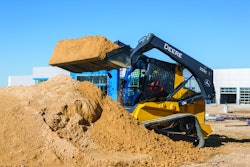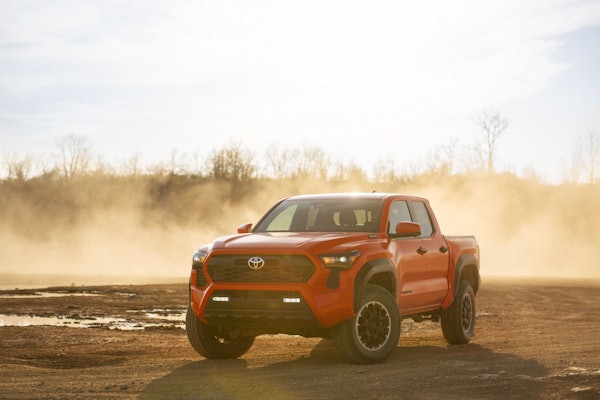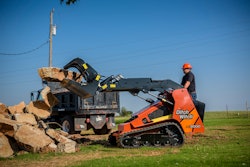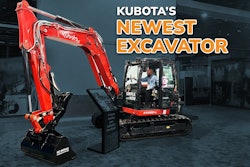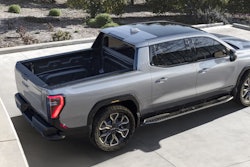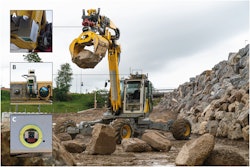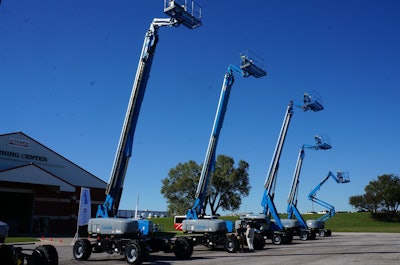 Genie is preparing for future ANSI standards with its XC lineup of aerial work platforms. Along with manufacturers, those same standards would affect rental dealerships and contractors. Photo by Don McLoud
Genie is preparing for future ANSI standards with its XC lineup of aerial work platforms. Along with manufacturers, those same standards would affect rental dealerships and contractors. Photo by Don McLoudNew standards could soon be coming to the U.S. aerial work platform industry that will lead to major changes to the machines, how rental shops deal with their customers and how contractors plan projects.
Manufacturers, such as Genie, are already making plans for the ANSI A92 standards with design changes to their aerial lift products, but they’re also trying to get the word out industrywide to let rental companies, contractors and others know that the changes will affect them as well.
“The standards change is going to make a huge difference in the way work is done,” said Genie President Matt Fearon during a press event October 17 at the company’s Oklahoma City plant.
The changes will not only alter machine design, but require additional training and responsibilities for contractors and rental companies.
The standards even change the products’ names.
No longer will they be called aerial work platforms, or AWPs. Instead, they will be known as “MEWPs.” That stands for “mobile elevating work platforms.”
For manufacturers, the hope is the ANSI standards will bring the United States up to global standards and allow them to sell products worldwide with little to no alterations.
Genie Director of Product Management Adam Hailey explains that because of the various regional requirements, “we had divergence in our products, and that made it more challenging for us to offer a consistent solution to our customers.”
But as the use of aerial platforms has grown globally, now much of the world is increasing their safety standards. It’s only a matter of time before the United States follows suit, especially after Canada published its standards in May, Hailey says. Those standards, however, still require approval from the country’s provinces before they take effect.
“We’re looking to a future of a harmonized global standard,” Hailey says. “…We are making products that are going to have to cross borders.”
What will the changes mean?
Aside from the name change, rental dealerships and contractors will spend more time thinking about the types of aerial devices needed on a job.
Currently, Hailey says, the main question is: How high does it need to go?
But because the standards will lead to major technological changes to the machines and affect how they perform, contractors and rental shops seeking the right equipment will need to know such things as:
- What kind of terrain are you on?
- How much load are you lifting?
- How far out do you need to reach?
“All of those questions are going to need to be a part of that conversation,” Hailey says.
For instance, ANSI calls for the machines to be designed to address issues, such as wind effect on load. That may lead some machines to be rated for indoor use only, or outdoor-use machines may have more limited working height. Some machines will have counterweight added, which can drive up machine costs. Others may have reduced platform capacity or occupancy.
The standards also address chassis tilt. The machines are now rated for firm, level ground, but manufacturers would have to factor in a certain level of tilt. The machines will automatically halt operation if the chassis begins to tilt at a steeper than rated angle.
Platform capacity would also be affected by the standards. Contractors and rental dealers would need to know how much weight they will actually put on the platform because the machine would automatically shut off if it exceeds its rated capacity. Currently, that task is left up to the operator, with many going above rated capacity on jobsites, Hailey says.
“If a machine only has 500-pound capacity and you’re doing steel work, you may need two machines or more cycles,” Hailey says.
Hailey notes that machines built before the new ANSI standards will be grandfathered in and not have to be upgraded. That could pose a challenge for those managing mixed fleets of ANSI-compliant and older machines, as some jobs often require the most updated safety specification.
The standards also call for more training for platform operators and occupants. Operators won’t just be able to hop on a machine unless they’ve had training on it. Supervisors will also have to undergo training to better understand the machines’ operation.
“That is something that’s going to have to be well understood, even at the rental level,” Hailey says. “…There will be additional requirements they’re not used to now based on the operator and anybody who is interacting.”
When will it happen?
So far, it’s anybody’s guess when the ANSI standards will be published, after which the industry has one year to comply. A publish date had been expected this year, but appeals of the standards have delayed them.
The earliest the standards could be published is January 2018, says Tony Groat, ANSI A92.22 Safe-Use Subcommittee chairman and North America regional manager of the International Powered Access Federation.
Groat explains that the ANSI’s design, safe-use and training standards for aerial platforms are to be issued together and can’t be published until the appeals are completed. All three sets of standards, however, have been approved by the consensus body of the Scaffold and Access Industry Association. After the appeals are addressed, the standards are then forwarded to ANSI for approval and publication.
“The bottom line is that the standards are moving forward under the required development processes, and the anticipated publication has been delayed by the addition of appeals,” Groat says.
Meanwhile, Genie and other manufacturers are banking on the standards taking effect soon.
The goal has become addressing those standards without hindering jobsite production. Another concern will be keeping things as simple as possible for operators.
“We’re adding a lot of technology to these machines,” Hailey says. “There’s a risk with all of this technology of making the product overly complex. We’re very sensitive to that.”
There’s also a concern the industry won’t be ready for the changes. To that end, Genie has developed resources and training under the “Aerial Pros” section of its website: aerialpros.genielift.com.





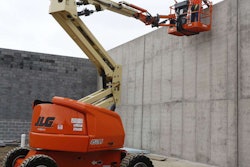
![DSC_0749[1]](https://img.equipmentworld.com/files/base/randallreilly/all/image/2017/10/eqw.DSC_07491.png?auto=format%2Ccompress&fit=crop&h=167&q=70&w=250)
